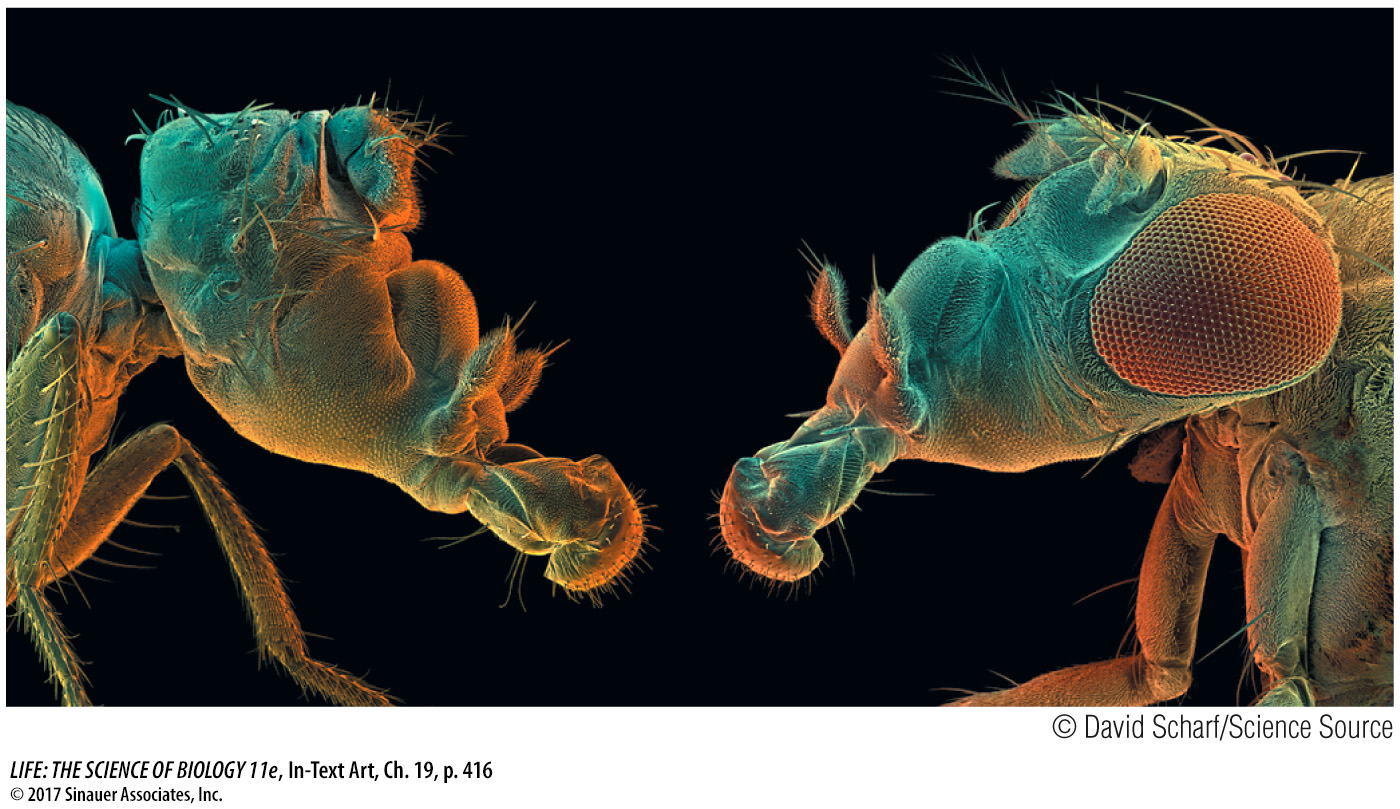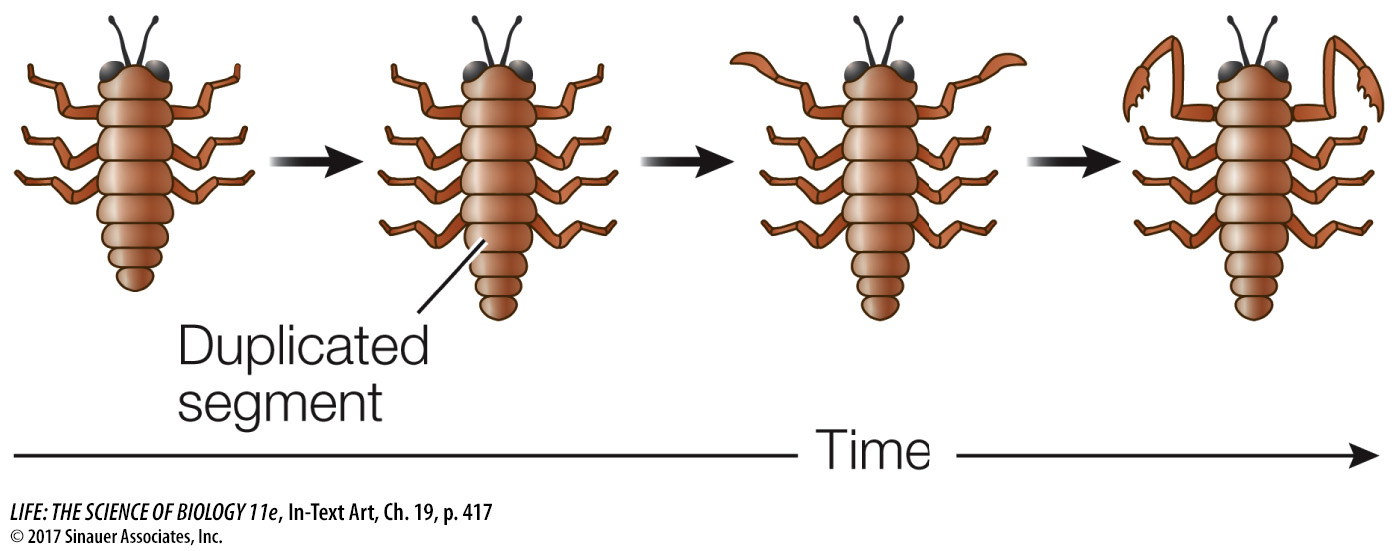Developmental genes in distantly related organisms are similar
About a dozen major *kinds of eyes are found among the different animals, including the camera-
*connect the concepts The structures of vertebrate and invertebrate eyes are discussed and compared in Key Concept 45.4.
More than a century ago, a mutation was described in Drosophila called eyeless, with a phenotype of—

This mutation remained a laboratory curiosity for many decades until its molecular nature was elucidated in the 1990s. Swiss developmental biologists Rebecca Quiring and Walter Gehring isolated the protein product of the wild-
The big surprise came when the biologists sequenced the eyeless gene and used computers to query a database of genes with known sequences. The eyeless gene sequence was similar to that of the Pax6 gene in mice; Pax6, when mutated, leads to the development of abnormally small eyes. Could the extremely different eyes of flies and mice be variations on a common developmental theme? To test for functional similarity between the insect and mammalian genes, the biologists repeated their experiments on flies, but using the mouse Pax6 gene instead of the fly eyeless gene. Once again, eyes developed at various sites on the transgenic flies. Thus a gene whose expression normally leads to the development of a mammalian eye now led to the development of the very different insect eye.
We have to look very far back in evolutionary time for a common ancestor of fruit flies and mice. Yet the eyeless and Pax6 genes contain sequences that are highly conserved, not only in these two species but in others as well. Biologists call such genes homologous, meaning that they evolved from a gene present in a common ancestor.
In recent years a large number of homologous genes (the regulatory “toolkit”) have been shown to control development in distantly related species. For example, the fruit fly homeotic genes such as Antennapedia and bithorax are similar to mouse (and human) genes that play similar developmental roles.This discovery indicates that the positional information controlled by these genes has been conserved, even as the structures formed at each position have changed. Remarkably, these genes are arranged along a chromosome in both fruit fly and mouse in the same order as they are expressed along the anterior–

One way that the toolkit can change is through *gene duplication. As noted in Figure 19.14, Antennapdedia and bithorax are not just single genes, but gene clusters, with each gene slightly different from the others. When we described gene families in Key Concept 17.3, we observed that each member of the family evolved from a single, ancestral gene. So it is with these developmental genes. Through duplication and subsequent mutation, the Hox genes diverged to encode different structures in different segments:

*connect the concepts Key Concept 23.3 explains that most new functions arise as a result of gene duplication.